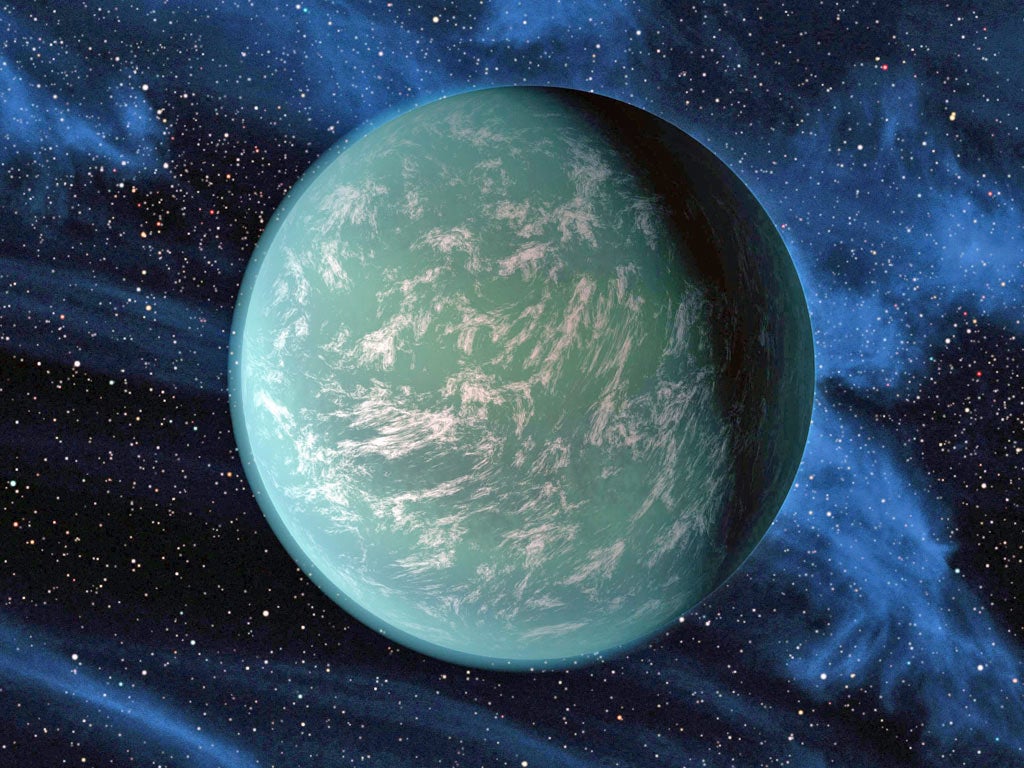
Your support helps us to tell the story
From reproductive rights to climate change to Big Tech, The Independent is on the ground when the story is developing. Whether it's investigating the financials of Elon Musk's pro-Trump PAC or producing our latest documentary, 'The A Word', which shines a light on the American women fighting for reproductive rights, we know how important it is to parse out the facts from the messaging.
At such a critical moment in US history, we need reporters on the ground. Your donation allows us to keep sending journalists to speak to both sides of the story.
The Independent is trusted by Americans across the entire political spectrum. And unlike many other quality news outlets, we choose not to lock Americans out of our reporting and analysis with paywalls. We believe quality journalism should be available to everyone, paid for by those who can afford it.
Your support makes all the difference.A new planet detected orbiting a star 600 light years away could have continents, oceans and life, it was revealed today.
The planet, Kepler-22b, is about twice the size of Earth and may have a surface temperature of around 22C - similar to a warm spring day in the UK.
It is the first so-called "super-Earth" known to lie within the "habitable" zone of a Sun-like star.
Dubbed the "Goldilocks zone", this is the orbital band where temperatures are just right to allow the existence of surface liquid water.
This means the planet could have continents and oceans just like the Earth. And where there is liquid water, there could also be life.
Scientists believe Kepler-22b may not only be habitable, but possibly even inhabited.
"This discovery supports the growing belief that we live in a universe crowded with life," said Dr Alan Boss, from the Carnegie Institution in Washington DC, who helped identify the planet from data obtained by the Kepler space telescope.
The telescope, launched by the American space agency Nasa, is watching 155,000 stars looking for tiny dimmings in brightness that betray the presence of planets.
Kepler-22b's host star, in the region of the constellations of Lyra and Cygnus, is slightly smaller than the Sun and about 25% less luminous.
The planet orbits the star in 290 days, compared with the Earth's 365, at a distance 15% closer than the Earth is from the Sun.
It lies right in the centre of the star's habitable zone, where potentially perfect conditions exist for life.
Two other small planets orbiting stars smaller and cooler than the Sun have recently been found at the very edges of their habitable zones. Their orbits more closely resemble those of Mars and Venus.
A report on the discovery will be published by the Astrophysical Journal.
Dr Douglas Hudgins, Kepler programme scientist at Nasa headquarters in Washington, said: "This is a major milestone on the road to finding Earth's twin."
The planet was spotted after making a "transit" across the front of its parent star, causing the star's brightness to dip. At least three transits are needed before such a signal can be confirmed as a planet.
PA
Join our commenting forum
Join thought-provoking conversations, follow other Independent readers and see their replies
Comments